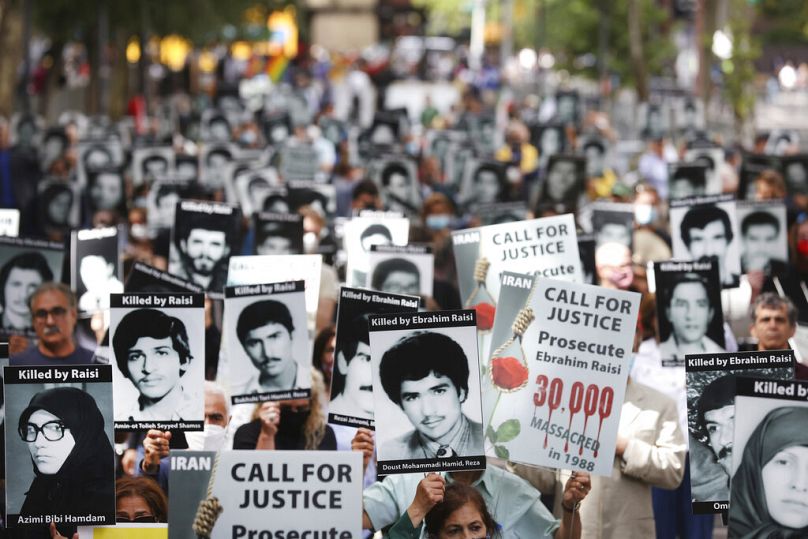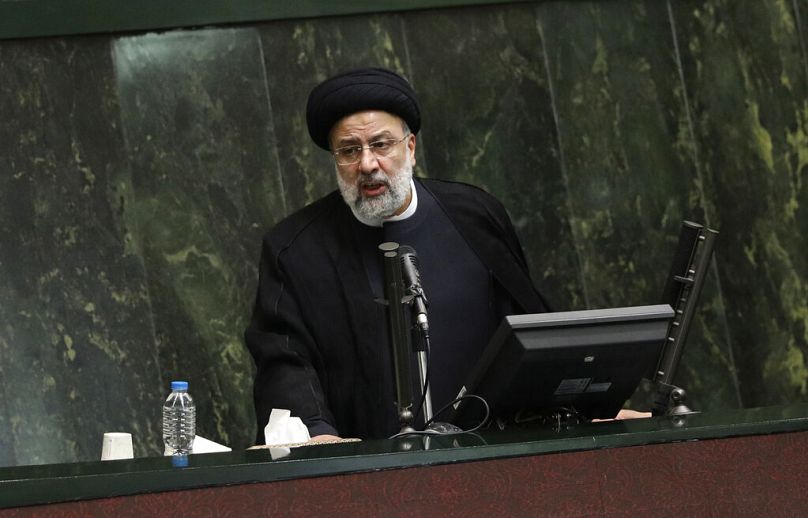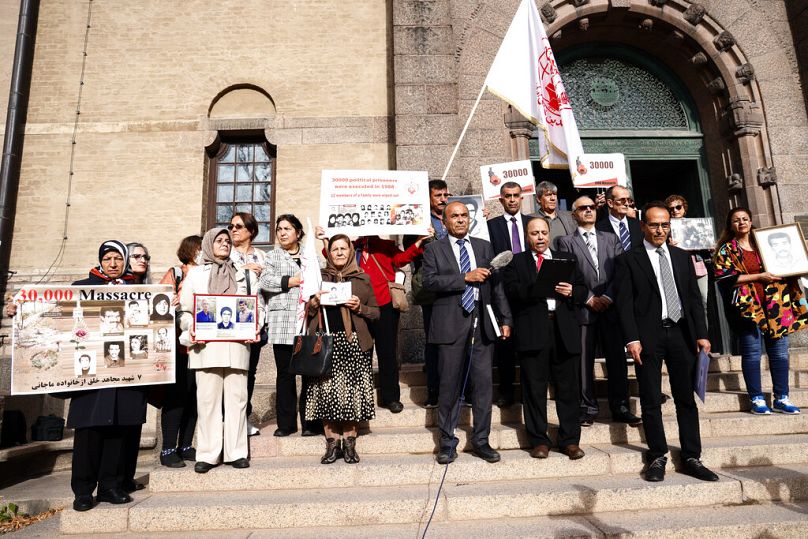The case against an ex-official in Sweden for his part in Iran's 1988 prison massacre is the first step in a long road to accountability, says Dr. Senabargh Zahedi of the National Council of Resistance of Iran
Up until 2016, the Iranian regime had succeeded in preserving a red line: No talk, no tears, and no questioning what happened in Iranian prisons in the summer of 1988.
Ruhollah Khomeini, a cleric who became Supreme Leader after the people of Iran ousted the former monarchial dictatorship in 1979, ordered the elimination of members and supporters of the People’s Mojahedin Organization (PMOI/MEK) who stood loyal to their beliefs.
In 1988, some 30,000 PMOI members were murdered and buried in mass graves, and history was told to forget their names.
Supporters of the PMOI were also arrested and executed for speaking at gatherings where the families of the executed political prisoners were mourning at the burial sites, uncertain if their loved ones might be resting there.
The executions of the 1980s have been a never-healing wound deep in Iranians’ conscience. Tens of thousands of families are still searching for closure. After years of bloody oppression, tears have left their eyes and anger has filled their hearts.
Iran's leadership is implicated in the slaughter
Obscuring the massacre of 1988 is tied to the regime’s survival: a “national security” issue if you will.
But in July 2016, Maryam Rajavi, president-elect of the National Council of Resistance of Iran, vowed to start a litigation campaign against the perpetrators. Demonstrations and conferences were held, articles were written, and media reports started to be published.
On August 9, 2016, around the 28th anniversary of that bloody summer, an audio file was posted on the official website of Ayatollah Montazeri: the then-designated successor of Khomeini.
In that file, posted by the Ayatollah's son Ahmad, Montazeri is heard strongly objecting to the mass killings while talking with the Death Commission - a panel set up to decide which prisoners lived or died - in 1988. He accuses them of committing the "severest crime in the Islamic Republic’s history".
The leaked file shocked the entire nation, and it eventually shattered now-Supreme Leader Ali Khamenei’s plans to appoint Ebrahim Raisi, his preferred candidate, as president in the 2017 election.
Raisi was a key member of the Death Commission, which ordered the killings. The nationwide outrage against Raisi was overwhelming, and thus he and Khamenei lost a battle that went far beyond a mere presidential ticket.
International bodies - and Swedish prosecutors - begin push for justice
In December 2018, after 30 years of investigations, Amnesty International made its results public, calling the massacre an “ongoing crime against humanity”.
In December 2020, seven UN special rapporteurs unveiled a letter they had written to the Iranian regime, also stating that the 1988 massacre may amount to “crime against humanity”.
On May 3, 2021, 152 former UN officials, Nobel laureates, ex-heads of states, and human rights experts demanded an international probe into the killings. In just five years, the outcry went beyond Iran’s borders and gained international recognition. Tehran’s red line was crossed.
Hamid Nouri, an assistant prosecutor during the mass executions, was arrested by the Swedish police in November 2019.
According to numerous accounts, he had beaten, tortured and directed political prisoners to the gallows in 1988, and even kicked the chairs from under their feet when they were hanged.
After 18 months of investigation, the Swedish judiciary opened Hamid Noury’s trial in August. It’s ironic that a man who witnessed thousands of political prisoners’ fates being determined within minutes is going through a legal procedure that allows him to defend himself for months.
A turning point in the proceedings is the court's recent decision to hold all its hearings for two weeks in Albania, where some of the survivors of the 1988 massacre, all PMOI/MEK members, are residing.
Announcing the decision last week, the judge said their testimony was vital for the case.
Impunity continues at Stockholm District Court
Since day one of the trials, I’ve been listening carefully and watching Hamid Nouri closely. I tried to find the slightest glimpse of humanity, a moment of regret in his eyes or in his body language. But I failed.
When I was studying law at Tehran University in the 1970s, one of our majors was criminology. When discussing the ‘motives or causes of crime’, we studied particular cases of criminals caught by the Iranian judicial system.
A theory then suggested that some people suffering from genetic disorders were 'natural born criminals'. Over time, the thesis was disputed, and the wisdom of life taught me that love is gifted, while hatred is learned.
But studying Hamid Noury’s character and watching his reactions in court, I began to doubt this knowledge. He shouted out immediately, only when a plaintiff offended Khomeini's name.
Noury has praised the judges who were responsible for thousands of executions in 1988, and says he’s proud of what they have done. He states that those who were tortured and hanged deserved it.
When two of the female plaintiffs were talking about how their entire family had been eliminated, he raised his arms as if he were praying and shouted: “Thank God!”. He is terrorizing the entire courtroom from the defendant's seat. He is still able to torture, no matter his position.
Hamid Nouri is a third-grade pawn of this regime. The role of Ebrahim Raisi, now the president of Iran, in the massacre has been widely called out by the international public.
There are dozens of decision-makers, and hundreds of individuals, who kicked the chair, raped and tortured, or pulled the trigger during that time. Those foot soldiers have now become state officials.
Perpetrators will be held to account
It’s upon us to mobilise jurists and lawyers in democratic countries to hold these criminals to account. Based on the principle of universal jurisdiction, we have the right to - and we must - do whatever it takes to bring about justice.
We owe it to 30,000 souls who bravely looked the henchmen in the eye and said ‘no’. Humans deserve more than to live on their knees.
At the end of the 20th century, a horrendous crime was committed in Iran. Those responsible continue to ideologically plague the Middle East and are extorting the world over weapons of mass destruction.
As survivors of the regime’s suppression who are still fighting it, we have been called many names.
But like those who didn’t surrender in 1988, we won’t fear the regime's slanders. If we eventually fail to hold them accountable through the justice system of the free world, we will do it in a free Iran.
Dr Senabargh Zahedi is chairman of the Judiciary Committee of the National Council of Resistance of Iran.














